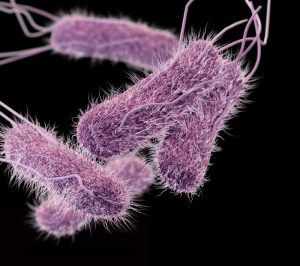NewsDesk @infectiousdiseasenews
More than a quarter million typhoid fever cases were reported in the Democratic Republic of the Congo (DRC) since our last report in early November 2021 when 1,121,104 total typhoid cases were reported.

According to the World Health Organization (WHO), from the beginning of 2021 through December 12, 1,380,955 suspected cases of typhoid fever have been reported including 502 deaths (CFR 0.03%), including 30,934 confirmed cases.
This total is lower than 2020’s numbers- a total of 1,456,721 suspected cases of typhoid fever were reported, including 442 deaths (CFR 0.03%).
Typhoid fever, caused by the bacterium Salmonella typhi, is a life-threatening bacterial infection. Typhoid fever is still common in the developing world, where it affects about 21 million people annually.
Salmonella typhi lives only in humans. Persons with typhoid fever carry the bacteria in their bloodstream and intestinal tract. In addition, a small number of persons, called carriers, recover from typhoid fever but continue to carry the bacteria. Both ill persons and carriers shed S.typhi in their feces.
You can get typhoid fever if you eat food or drink beverages that have been handled by a person who is shedding S. typhi or if sewage contaminated with S. typhi bacteria gets into the water you use for drinking or washing food. Therefore, typhoid fever is more common in areas of the world where handwashing is less frequent and water is likely to be contaminated with sewage.
- Gino’s Pizzeria Probable Source in PA Hep A Outbreak
- WHO monitors malaria outbreak in South Sudan
- H5N6 avian influenza: China reports 1st case of 2022
- Omicron: Resistant to most monoclonal antibodies but neutralized by a booster dose
- China reports human H9N2 avian influenza case in Guangdong Province child
- Rabies in the US 2021: ‘This recent spate of cases is a sobering reminder that contact with bats poses a real health risk’
- Zimbabwe: Shigella outbreak declared in Bulawayo City
Subscribe to Outbreak News TV on YouTube


One thought on “Typhoid fever in the DRC: More than 500 deaths in 2021”